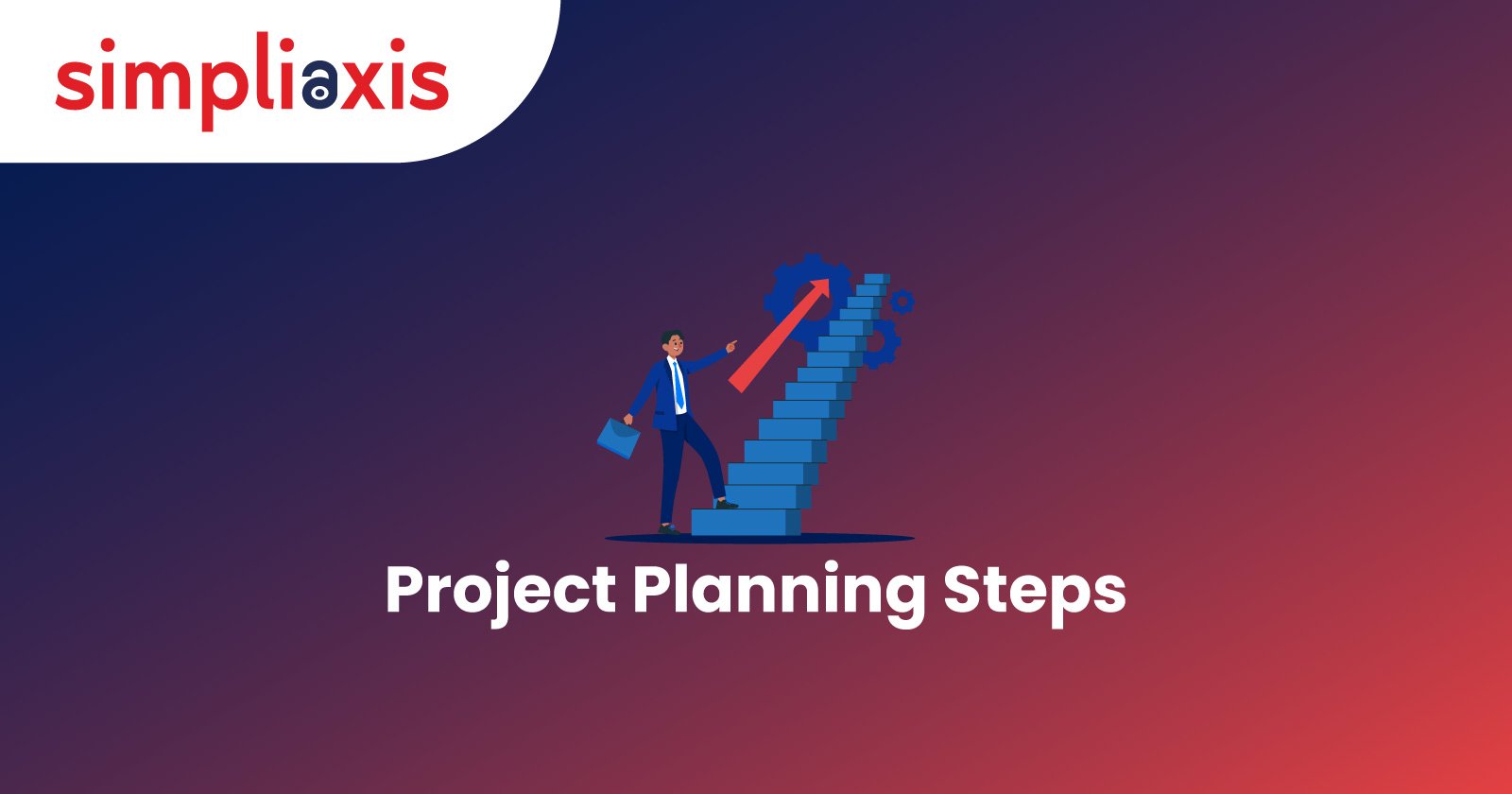As a Project Manager or Project Leader, you might be aware of one thing. Planning is the foundation for any project. Let us consider that you are entrusted with the responsibility of handling a project. Now, the first thing you will have to do is Project Planning. In many instances, Project Leaders fail to plan as they are in a hurry to begin the work. But, when you spend time initially to properly plan a project, it can help you prevent many issues. Even, it will prevent loss of money and time in the future as the project progresses. So, it is better to develop a simple yet practical project plan.
Before you get into the Project Planning steps shared here, it is better to understand what is Project Planning at the first instance:
Definition of Project Planning:
Project planning is a discipline that addresses how to finish a project in a particular time frame. Organizations generally follow pre-defined stages in Project Planning. Even, the planning often encompasses designated resources as well. Project Planning involves setting measurable goals, identifying deliverables, scheduling and planning tasks.
Apart from the main project planning, there should also be supporting plans. These plans should encompass planning for risk management, communication and human resources.
Documents Required for Project Planning:
You are here to learn how to make a project plan. Before you begin the process, it is better to ensure that you keep some documents ready. When you have these documents handy during your project execution, things will fall in place with ease:
Project Charter:
This document will provide a general idea of the project. It will describe the stakeholders, constraints of the project, project goals and reasons.
Statement of Work:
Shortly referred to as SOW, the purpose of this document is to define the scope of the project. Even, it will detail the tasks, milestones, deliverables and schedule.
Work Breakdown Structure:
It will split the scope of the project. The division will have work packages, deliverables, subprojects and phases. All these together lead to the final project deliverables.
Project Plan Template:
Again, this document is split into sections. The split is for covering change management plan and schedule management. It will also cover stakeholder management, resource management, risk assessment, quality management and scope management.
Now, you know that documents to prepare. These documents together will explain everything about your project. Now, let us get into the project planning process steps on how to create a project plan:
Step 1: Instigate with Research and Planning:
You should never think project plan as a dry document with dates. It is more than that. It should actually read the entire story of your project. So, before you begin, you should research properly:
Understand the value of the project and its scope:
You can decide on the best process to follow only when you are aware of the ins and outs of the project. You should judge the hindrances that can come in the way of your project. To gain complete knowledge, you should get a deeper knowledge on the following:
Goals and results of the project
Outlying dependencies and partnerships
Potential risks and issues.
At this stage, you should get into communications that are appropriate to your project. Also, the project scope should be reviewed. Further, you should make sure that you are thorough in your research to get to know crucial project details. Do not forget to ask thoughtful questions before you commit to anything.
In this first stage, you should also converse with stakeholders. It is better to ensure that you discuss the following things with your stakeholders:
How to communicate with them effectively?
Outcomes, results and goals of similar projects like yours
Key driving factors, goals, projects and meetings
Stakeholder involvement and interest levels
Who will be responsible for decision-making?
Know Your Team Members Thoroughly:
At this first stage, you should find time to sit with your team members. Get to know their expertise, workload and availability. Also, know about the communication methods they are convenient with. Further, know about their personal interests.
You might think why should I know about each member of my team. Understanding these basic things about your team members will help. Yes, you can make a thoughtful plan considering the bandwidth and the working style of each member. Always remember that only a happy team can deliver better projects.
Step 2: Draft a Rough Outline of the Project Plan:
Now, you know a rough idea of the project. Now, it is time to create a rough draft of the project plan. Recollect the discussions you had with the stakeholders and team members. Accordingly, create a plan that your team can follow to meet the project goals.
When you are creating a rough plan, ensure that you have a calendar close to check dates. Begin by outlining how the project should work at a high level.
You can begin by asking the following questions:
When will the team meet milestones?
What are the key deliverables?
How to get to those deliverables and deadlines?
In short, you can make sure that your draft has details of the deliverables and the client approval process. Also, it should have the timeframes connected with deliverables or tasks. It should also encompass ideas of resources required for deliverables/tasks. Further, it should have the list of assumptions you make in the plan. It should also have a list of absolutes as they are associated with the project budget/deliverables.
When you are at this stage, it is better to do one thing. You can get inputs from your team in certain areas. They are timing, effort and process. As they would have worked on many projects earlier, your team members can help you with framing these things.
Step 3: Build Detailed Project Schedule:
Based on the previous step, you now have a rough plan. Now, you can use one of the many tools available these days that will help you create a rock-solid project schedule.
When you use a good online project planning tool, it will help you formalize your thoughts. Further, it will help you lay your thoughts down into a visual and consistent format that becomes easy to follow and track. When using this type of tool, you should make sure that your plan is simple. Ensure dates, milestones and tasks are clearly laid out. It should be easy to read and understand for your team to follow.
Step 4: Submit and Confirm your Plan:
Now, you have built your plan successfully. So, it is time to submit and get it approved. You can make additions to your plan with ease. Nevertheless, you should check whether it is right and feasible.
Before you take the plan to stakeholders, you should do one thing. You should try running it with your team. Your team members should be able to implement it. Check whether they are comfortable in committing to the plan. If they cannot, it will be a waste of time and effort. When discussing with your team, here are some areas you should focus on:
Major changes you have made after your previous discussion with your team
Any assumptions that you have made
The final deadline
Milestones, meetings and time-offs
Dependencies
Teamwork times
Review times
Based on the suggestions from your team, you can make some required changes. Once everything is fine with your team, you can submit it to the stakeholders.
When presenting the project plan to stakeholders, make sure that you provide an executive summary. It can be in the form of a document like a project charter or a project brief. In short, it should have a small review of the entire resources and deadlines. It should talk about methodology, assumptions and related review times. In turn, the plan you present before your stakeholders will convey what the plan means not only to the individuals involved but also to the entire project. When presenting the project plan with stakeholders, it is better to cover the following points:
The overall pace of the project and process
Key timings and deliverables
Review time for deliverables
The overall time for different phases of the project
Wiggle room for the final project delivery
Step 5: Execution of the Plan with a Room for Adjustment:
In this final phase among the stages in project planning, you should remember one thing. Some projects are easy to manage and smooth. Nevertheless, some turn out to be nightmares. But, when you have a good plan with ideas to defend against troubles, you can make things smooth. You should remember that project plans are living documents. Also, changes can happen constantly. So, as a representative, you should:
Keep an eye on the risks and communicate them as the project moves
Communicate changes to your stakeholders, team members and partners
As things change and the project progresses, update the changes regularly.
Simpliaxis is one of the leading professional certification training providers in the world offering multiple courses related to Project. We offer numerous Project related courses such as Project Management Professional (PMP)® Certification Training, Project Management Techniques Training, PRINCE2® Foundation and Practitioner Certification Training, PRINCE2® Foundation Certification Training, PRINCE2® Practitioner Certification Training, Certified Associate in Project Management (CAPM®) Certification Training, PRINCE2 Agile® Foundation Certification Training, PRINCE2 Agile® Practitioner Certification Training, Primavera P6 v 20.12 certification training, PRINCE2 Agile Foundation and Practitioner Certification Training, Project Management Fundamental Training and much more. Simpliaxis delivers training to both individuals and corporate groups through instructor-led classroom and online virtual sessions.
Conclusion:
So, follow these stages in Project Planning. When you follow these stages rightly, you can ensure the smooth planning and execution of the project. Remember to keep an eye on the changes and keep your team informed so that they stay updated. Together, you and your team can ensure project success.



















